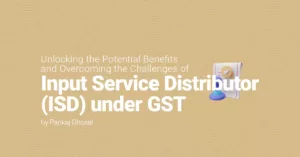The aftermath of the IL&FS default debacle saw an unprecedented war of words erupting between the Central Government and the Reserve Bank of India (RBI); and the contentious point being the demand for capital.
The Government probably had an eye on RBI’s sumptuous reserves and was aiming at getting a larger pie to meet its fiscal deficit targets which were worsened by demonetization & the shoddy implementation of a much-awaited tax reform, the GST.
But even before the Government could blink, RBI’s strong disagreement was made public and what followed were speculations galore, with some even predicting the RBI Governor’s exit. Thankfully, nothing of that sort has happened so far and both sides have tactfully retreated from their positions. The hype around it has settled but the capital needs have not.
The RBI’s announcements post their recently-concluded board meeting of infusing liquidity and forming a committee to evaluate PCA norms and capital adequacy requirements would be a long-drawn process while the need for capital is immediate if not urgent.
The capital starvation in the money markets is such that almost all major NBFCs have gone into their shells and in ‘capital conservation’ mode. Lending is almost at a halt among the NBFCs because of the uncertainty around future debt issuance, asset liability mismatch and pricing worries.
IL&FS is already down, Religare is struggling with its own issues, India Bulls has increased interest rates across the spectrum of borrowers in a bid to increase its capital buffer, DHFL is rumored to have drawn a plan to get rid of its subsidiary Aadhar Housing to have some cash to wither away the storm, and the likes of JM, Piramal, Edelweiss, and so on, seem to be lying down and closely watching the space, as they refrain from any action.
The immediate casualty of NBFCs has taken a toll on real estate companies. The real estate players have always received step-motherly treatment from PSU (Public Sector Undertaking) lenders and with most PSU lenders under PCA (Prompt Corrective Action), NBFCs had extended the much-needed credit to real estate borrowers.
The struggle for real estate seems unending because of demonetization, RERA (Real Estate Regulatory Act) and then GST. It seems that the last door which they used to knock on, i.e. the NBFCs, has also been closed for them, leaving them with no option but to stop construction and part ways with ready inventories at prices which are 25-30% lower than what an average market would have given them.
Even that is not helping their cause as the buyers have vanished from the market and no retail buyer is keen putting money in an under-construction project.
The Government has time and again insisted upon getting the right credit needs of MSME (Micro, Small and Medium Enterprise) borrowers fulfilled, but there has been no real, on-ground action in that sense. The simple logic behind it is that if larger corporate fail and do not get the right credit, the impact of the same would be there on MSMEs as well.
For example, If the car manufacturer Maruti fails, it would sink many auto ancillary MSME suppliers and manufacturers along with it. Similarly, expecting that a lending freeze amongst banks would help curtail the NPA (Non-Performing Asset) ratio is far from reality as the NPAs would continue to exist, and consequently, it is a ratio which gets balanced by the right mix of lending and health of a portfolio.
The fight for capital now is at its peak, and so are the uncertainties around it.
With elections around the corner, the Government must set the right momentum and create a buzz that showcases its intent to support business and credit demand. It is probably because of the same reason that the Government has appropriately initiated capital infusion in state-run banks as well as exerted pressure on RBI to relax PCA norms accordingly.
Seldom, one would have expected to see such times when the entire spectrum of PSU Lenders, Private Banks, NBFCs, RBI, Union Government, SEBI, Mutual Funds, and rating agencies would have developed so much of mistrust amongst each other. More than liquidity, it has to do with the weakening of confidence and until some real momentum is brought in, the scenario may not change. The tendency to wait and watch is likely to persist for now.
One solution could be to provide a 2-3 months window wherein all BBB & above rated borrower loans in select industries would be classified as PSL (Priority Sector Lending) thus attracting 50% of applicable capital charge to lenders, and see if it gets the cycle moving again. Or any other booster which in a real sense gets the broken cycle of lending and borrowing back on track.
That’s the only way sentiments would improve, and confidence will be restored in the sector.
–Written by Amit Pandey
Amit Pandey, with nearly 2 decades of experience in Capital Markets, serves as the Director of the Transaction Advisory Services practice at Coinmen Capital Advisors.
Note: Views presented in the article are of the author and not the firm.










